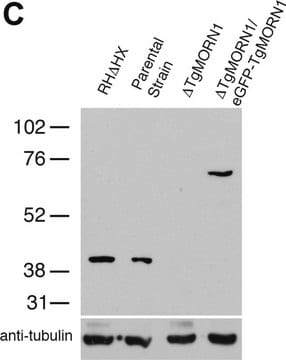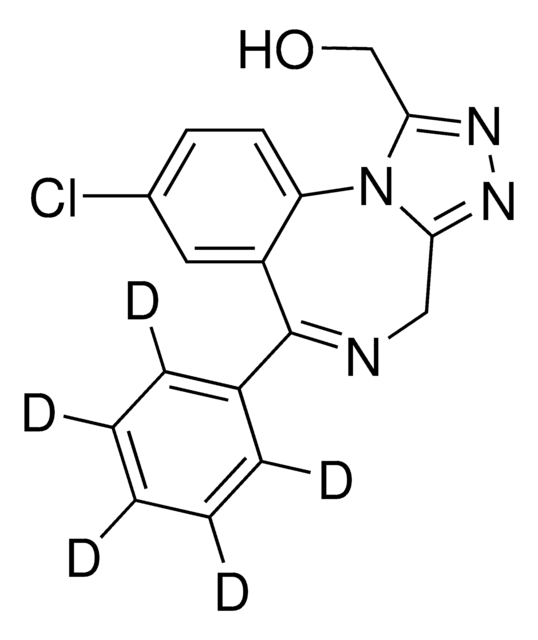T3195
Anti-γ-Tubulin Antibody
rabbit polyclonal
Synonyme(s) :
Anti-CDCBM4, Anti-GCP-1, Anti-TUBG, Anti-TUBGCP1
About This Item
Produits recommandés
product name
Anti-γ-Tubulin (DQ-19) antibody produced in rabbit, IgG fraction of antiserum, buffered aqueous solution
Source biologique
rabbit
Niveau de qualité
Conjugué
unconjugated
Forme d'anticorps
IgG fraction of antiserum
Type de produit anticorps
primary antibodies
Clone
polyclonal
Forme
buffered aqueous solution
Poids mol.
antigen 48 kDa
Espèces réactives
chicken, human
Technique(s)
indirect immunofluorescence: 1:500 using methanol-acetone fixed, cultured chicken fibroblasts.
western blot: 1:1,000 using whole cell extract of human epidermal carcinoma A431 cell line.
Numéro d'accès UniProt
Conditions d'expédition
dry ice
Température de stockage
−20°C
Modification post-traductionnelle de la cible
unmodified
Informations sur le gène
human ... TUBG1(7283) , TUBG2(27175)
Description générale
Immunogène
Application
- western blotting
- immunocytochemistry
- immunofluorescence
Actions biochimiques/physiologiques
Forme physique
Clause de non-responsabilité
Vous ne trouvez pas le bon produit ?
Essayez notre Outil de sélection de produits.
Code de la classe de stockage
10 - Combustible liquids
Classe de danger pour l'eau (WGK)
WGK 3
Point d'éclair (°F)
Not applicable
Point d'éclair (°C)
Not applicable
Certificats d'analyse (COA)
Recherchez un Certificats d'analyse (COA) en saisissant le numéro de lot du produit. Les numéros de lot figurent sur l'étiquette du produit après les mots "Lot" ou "Batch".
Déjà en possession de ce produit ?
Retrouvez la documentation relative aux produits que vous avez récemment achetés dans la Bibliothèque de documents.
Articles
Microtubules of the eukaryotic cytoskeleton are composed of a heterodimer of α- and β-tubulin. In addition to α-and β-tubulin, several other tubulins have been identified, bringing the number of distinct tubulin classes to seven.
Notre équipe de scientifiques dispose d'une expérience dans tous les secteurs de la recherche, notamment en sciences de la vie, science des matériaux, synthèse chimique, chromatographie, analyse et dans de nombreux autres domaines..
Contacter notre Service technique







